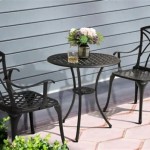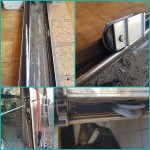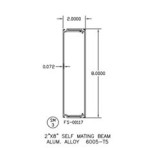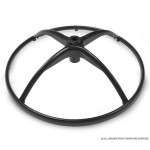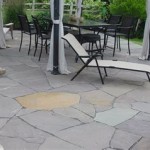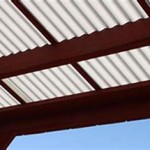```html
Concrete Patio Furniture: A Durable and Stylish Outdoor Choice
Concrete patio furniture is gaining popularity as a robust and aesthetically versatile option for outdoor spaces. Its inherent durability, combined with evolving design capabilities, makes it a compelling alternative to traditional materials like wood, metal, or plastic. This article explores the attributes of concrete patio furniture, focusing on its benefits, design considerations, and maintenance requirements.
The Enduring Appeal of Concrete
Concrete's primary advantage lies in its exceptional durability. Unlike wood that can rot, metal that can rust, or plastic that can degrade under UV exposure, concrete inherently resists weathering. This inherent resistance translates to a longer lifespan for concrete patio furniture, minimizing the need for frequent replacements. Its weight also provides stability, preventing it from being easily moved by wind, adding a significant advantage in exposed locations.
Beyond durability, concrete offers a unique aesthetic. Its raw, industrial appeal complements modern and minimalist design trends. The material's innate texture and slight imperfections lend a natural, organic feel to outdoor settings. This contrasts with the often-manufactured appearance of other materials. Furthermore, concrete can be stained, dyed, or polished to achieve a wide range of colors and finishes. This customization allows homeowners to tailor their furniture to match specific landscaping and architectural styles.
The sustainability aspect of concrete, although often debated, is also worthy of consideration. While the production of cement, a key ingredient in concrete, does contribute to carbon emissions, concrete is a relatively long-lasting material. Its longevity reduces the need for frequent replacements, thereby minimizing the overall environmental impact associated with manufacturing and disposal. Moreover, recycled aggregates can be incorporated into concrete mixes, further enhancing its sustainability profile.
Design Considerations for Concrete Patio Furniture
The design of concrete patio furniture is a critical factor in its suitability and overall appeal. Early concrete furniture was often bulky and simplistic. However, advancements in concrete technology and fabrication techniques have enabled the creation of more intricate and lighter designs.
One key design consideration is the reinforcement strategy. Concrete has high compressive strength, meaning it can withstand significant pressure. However, its tensile strength, or resistance to pulling forces, is comparatively low. Therefore, reinforcement with steel rebar or fiber-reinforced polymers is crucial to prevent cracking and ensure structural integrity. The type and amount of reinforcement will depend on the size and shape of the furniture piece.
The finish of the concrete is another important design element. A smooth, polished finish creates a sleek, contemporary look. Conversely, a rough, textured finish enhances the natural, organic aesthetic. Stains and dyes can be used to add color and visual interest. Sealants are crucial to protect the concrete from staining and water damage. The choice of finish will depend on the desired aesthetic and the specific application of the furniture.
Ergonomics is also a vital consideration. While concrete is a solid and durable material, it is not inherently comfortable to sit on. Therefore, incorporating cushions or padding is often necessary to enhance comfort. The design of the furniture should also consider the height and angle of the seating surfaces to promote proper posture and relaxation. The weight of the furniture, while contributing to its stability, can also be a drawback. Careful design can minimize the weight without compromising structural integrity. Lightweight concrete mixes and hollow core designs can be employed to achieve this goal.
Maintenance and Care of Concrete Patio Furniture
While concrete patio furniture is inherently durable, proper maintenance is essential to preserve its appearance and extend its lifespan. Regular cleaning is crucial to remove dirt, grime, and stains. A simple solution of soap and water is often sufficient for routine cleaning. For more stubborn stains, a mild detergent or specialized concrete cleaner can be used. It is important to avoid harsh chemicals or abrasive cleaners, as these can damage the surface of the concrete.
Sealing is another critical aspect of maintenance. Concrete is porous and can absorb liquids, leading to staining and deterioration. A sealant creates a protective barrier that prevents liquids from penetrating the surface. The type of sealant will depend on the type of concrete and the desired level of protection. It is generally recommended to reapply sealant every one to two years, or as needed, based on the furniture's exposure to the elements and frequency of use.
Protection from extreme weather conditions is also important. While concrete is resistant to weathering, prolonged exposure to freezing temperatures and thawing cycles can cause cracking. Covering the furniture during the winter months can help to prevent this type of damage. Additionally, protecting the furniture from direct sunlight can help to prevent fading and discoloration. Using furniture covers or positioning the furniture in a shaded area can mitigate the effects of UV exposure.
Surface imperfections, such as minor cracks or chips, may develop over time. These imperfections can be repaired using concrete patching compounds or epoxy resins. It is important to choose a repair material that is compatible with the existing concrete and that matches the color and texture of the surrounding area. Following the manufacturer's instructions carefully when applying repair materials is essential to ensure a durable and aesthetically pleasing result.
Finally, consider the placement of the furniture. Avoid placing concrete furniture directly on soft ground, as this can cause it to sink or become unstable. A level and firm surface, such as a patio slab or gravel base, is ideal. This will help to distribute the weight of the furniture evenly and prevent it from shifting or tilting. Proper placement will also contribute to the overall stability and longevity of the furniture.
```
Concrete Outdoor Furniture Kathy Kuo Home

An Outdoor Furniture Collection Was Made By 3d Printing With Concrete Mahmoud Abbasi

Diy Concrete Outdoor Coffee Table The Honest Home

56 Outdoor Concrete Furniture Ideas With Pros And Cons Digsdigs

Concrete Patio Furniture Inspiration Outsidemodern Diy Garden Seating

55 Outdoor Concrete Furniture Ideas With Pros And Cons Shelterness Garden Table In 2024 Backyard

10 Easy Pieces Concrete Outdoor Furniture Gardenista

Gfrc Concrete Patio Furniture Tables Benches Terra Outdoor Living

Home Dzine Garden Ideas Use Concrete For Durable Outdoor Furniture

How To Make Concrete Furniture Exchange
Related Posts

